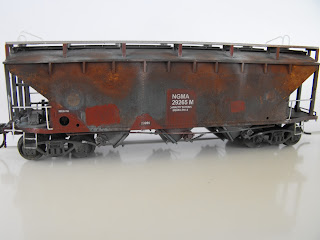Hi all,
Something different the "Lithgow accident van". The model is built from an old kit and I think it was a Rails North. Modeling the late 1980's, I did not think I would ever have a use for an ACM coach. After speaking to a few mates, I was told Lithgow used one for it's accident van, so the model was made based on the Ex ACM re-fitted as number L1129 accident van. I printed the decals on my PC and made a few extra sets If anyone needs any, shoot me an email.
Something different the "Lithgow accident van". The model is built from an old kit and I think it was a Rails North. Modeling the late 1980's, I did not think I would ever have a use for an ACM coach. After speaking to a few mates, I was told Lithgow used one for it's accident van, so the model was made based on the Ex ACM re-fitted as number L1129 accident van. I printed the decals on my PC and made a few extra sets If anyone needs any, shoot me an email.
Later,
Dean


























